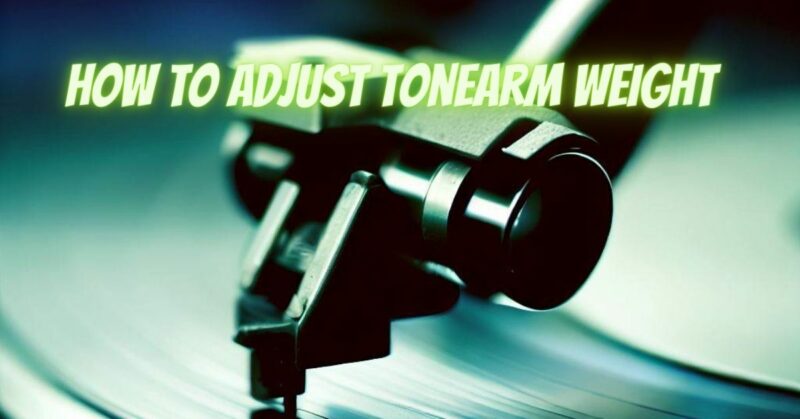The tonearm weight, also known as tracking force, plays a crucial role in the proper playback of vinyl records. It ensures that the stylus maintains consistent contact with the grooves while minimizing excessive wear and distortion. In this article, we will guide you through the process of adjusting the tonearm weight on your turntable, allowing you to achieve optimal performance and prolong the life of your records.
Step 1: Gather the Necessary Tools
- Turntable owner’s manual: Consult the manual specific to your turntable model for any manufacturer-specific instructions or guidelines.
- Digital tracking force scale (optional): This tool provides precise measurements of the tracking force, ensuring accurate adjustments. It is not essential but can be useful for those seeking precise tracking force settings.
Step 2: Prepare Your Turntable
- Ensure that your turntable is placed on a stable and level surface to prevent vibrations that can affect the accuracy of the tracking force adjustment.
- Power off your turntable and ensure that the tonearm is secured in the tonearm rest.
Step 3: Access the Tonearm Weight
- Locate the tonearm weight, which is typically positioned at the rear end of the tonearm.
- Some turntables have a locking mechanism on the tonearm weight. If applicable, unlock it according to the manufacturer’s instructions.
Step 4: Set the Initial Tracking Force
- Consult your turntable’s user manual or the specifications provided by the cartridge manufacturer to determine the recommended tracking force range for your specific cartridge.
- Rotate the tonearm weight until the tonearm floats horizontally and remains level without touching the platter or lifting off too high.
- Make note of the starting position of the tonearm weight or its numerical marking.
Step 5: Make Fine Adjustments
- If you have a digital tracking force scale, follow the instructions provided with the scale to measure the tracking force accurately. Place the scale under the stylus and carefully adjust the weight until the desired tracking force is achieved.
- If you don’t have a digital tracking force scale, make small adjustments to the tonearm weight and use your ears as a guide. Gradually increase or decrease the weight while playing a record until you achieve a balanced sound without distortion or skipping.
Step 6: Verify and Fine-Tune
- Once you have made adjustments, listen carefully to the playback and observe the tracking performance. Look for any audible distortion, skipping, or excessive surface noise.
- If needed, make further adjustments to the tonearm weight by repeating Steps 5 and 6 until you find the optimal tracking force for your cartridge and turntable combination.
Conclusion:
Properly adjusting the tonearm weight is essential for achieving accurate and distortion-free playback on your turntable. By following the steps outlined in this article, you can ensure that your stylus maintains optimal contact with the record grooves, resulting in improved sound quality and the preservation of your vinyl collection. Remember to consult your turntable’s manual for any specific instructions related to your model. Happy listening!

